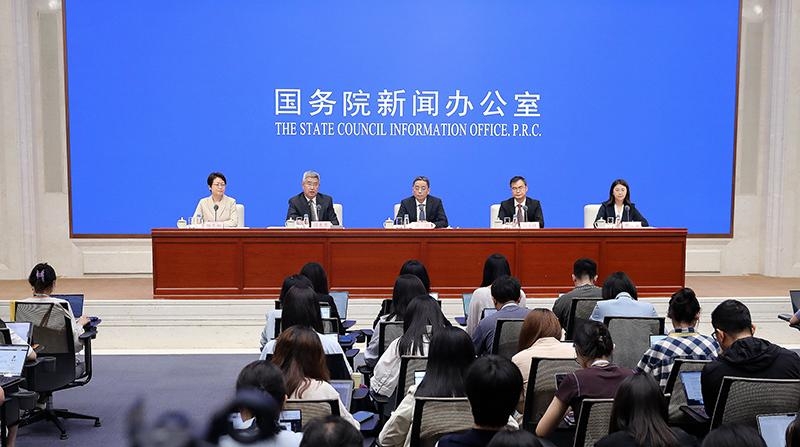Financial Times:
How have structural monetary policy tools been rolled out so far? Are there plans to introduce new ones or raise existing quotas this year? Thank you.
Zou Lan:
I'll answer this question. Based on the goals and requirements for high-quality economic development, the PBC has drawn on international experience in recent years and combined it with domestic realities. While implementing macroeconomic policy, we have extensively created and implemented structural monetary policy tools around supporting major national strategies, key sectors and weak links to further enhance the adaptability and precision of financial services for economic structural adjustment and high-quality economic development. Structural policy tools have achieved full coverage of all five major areas in the financial sector while also providing strong support for the steady and healthy development of the real estate market, capital market and other sectors.
In May, the PBC introduced another package of financial policy measures, many of which were structural policy tools aimed at further supporting economic structural transformation and upgrading.
First, we introduced the service consumption and elderly care relending facility and the sci-tech innovation bond risk-sharing instrument. The service consumption and elderly care relending facility has a quota of 500 billion yuan, specifically designed to incentivize and guide financial institutions to increase financial support for key areas of service consumption and the elderly care industry, which Mr. Peng just introduced. Meanwhile, the sci-tech innovation bond risk-sharing instrument supports equity investment institutions in issuing sci-tech innovation bonds for financing, while also supporting the construction of the bond market's "sci-tech board."
Second, in terms of scale, quotas for certain tools were increased and optimized. An additional 300 billion yuan each was allocated to the relending facility for technological innovation and upgrading and the relending facility for agriculture and small businesses. Meanwhile, the 500 billion yuan quota for the securities, funds and insurance companies swap facility and the 300 billion yuan quota for relending to support stock repurchases and shareholding increases have been merged for more flexible use.
Third, in terms of pricing, relending interest rates were lowered. The interest rates for relending facilities supporting agriculture and small businesses, pledged supplementary lending and various targeted structural monetary policy tools were all reduced by 25 basis points.
All of these structural policy measures were fully launched by the end of May and have continued to deliver positive effects. For example, by the end of May, the total contracted amount of loans for technological innovation and upgrading had reached 1.74 trillion yuan, with enterprises able to draw down funds as needed. The sci-tech innovation bond risk-sharing instrument has provided effective credit enhancement support for equity investment institutions to issue bonds for financing. By the end of June, 27 equity investment institutions had issued sci-tech innovation bonds in the interbank market, totaling over 15 billion yuan.
Moving forward, we will continue to leverage both the aggregate and structural functions of monetary policy tools. Structural monetary policy instruments will continue to focus on key sectors, adopt reasonable and moderate approaches, and build up ample room for maneuver. Building on the support for the five major areas in the financial sector, these tools will place greater emphasis on supporting core priorities such as technological innovation and boosting consumption. This will further enhance their effectiveness in promoting economic restructuring, transformation and upgrading, and the shift from old to new growth drivers. Thank you.
Xing Huina:
That concludes today's press conference. Thank you to Mr. Zou and our speakers, as well as our media colleagues. Goodbye!
Translated and edited by Zhu Bochen, Zhang Junmian, You Jiaxin, Li Congrong, Mi Xingang, Yang Chuanli, Huang Shan, Wang Mianyi, Li Huiru, Xu Kailin, Wang Qian, Cui Can, Li Xiao, Wang Xingguang, Zhang Rui, David Ball, and Jay Birbeck. In case of any discrepancy between the English and Chinese texts, the Chinese version is deemed to prevail.


 Share:
Share: 




 京公網安備 11010802027341號
京公網安備 11010802027341號